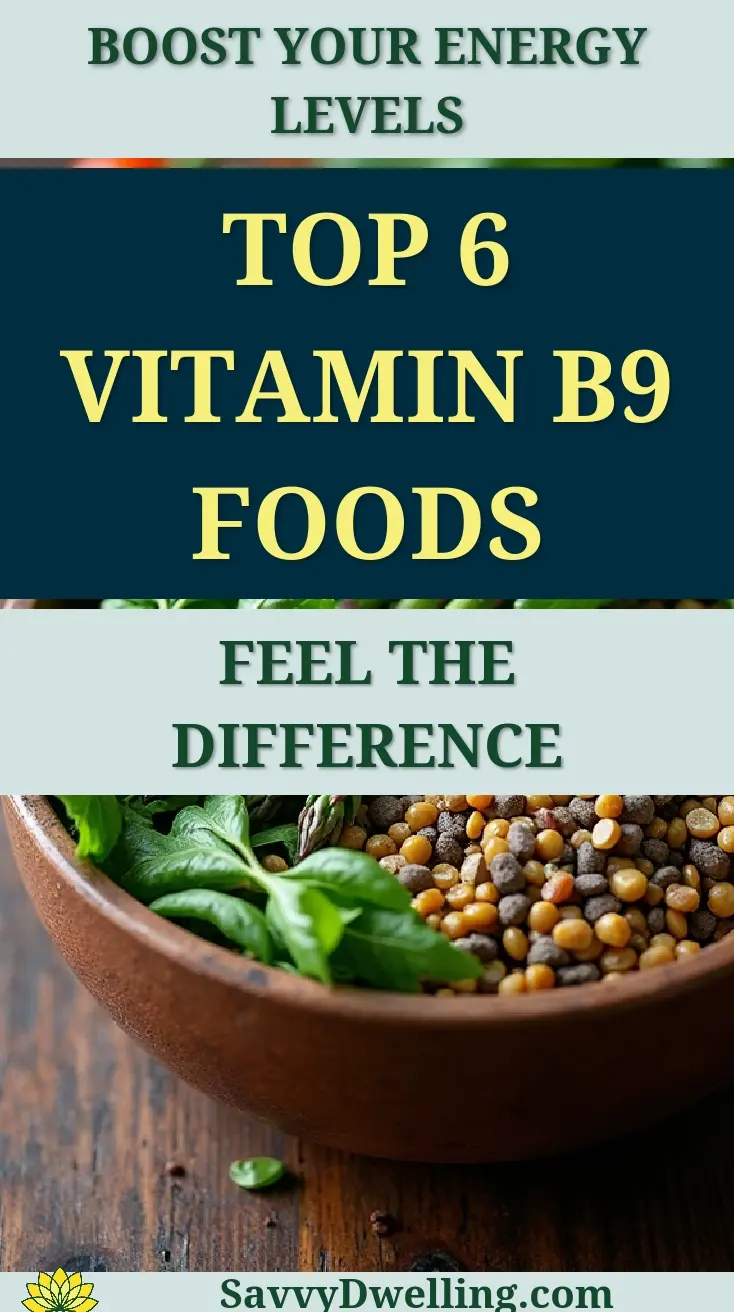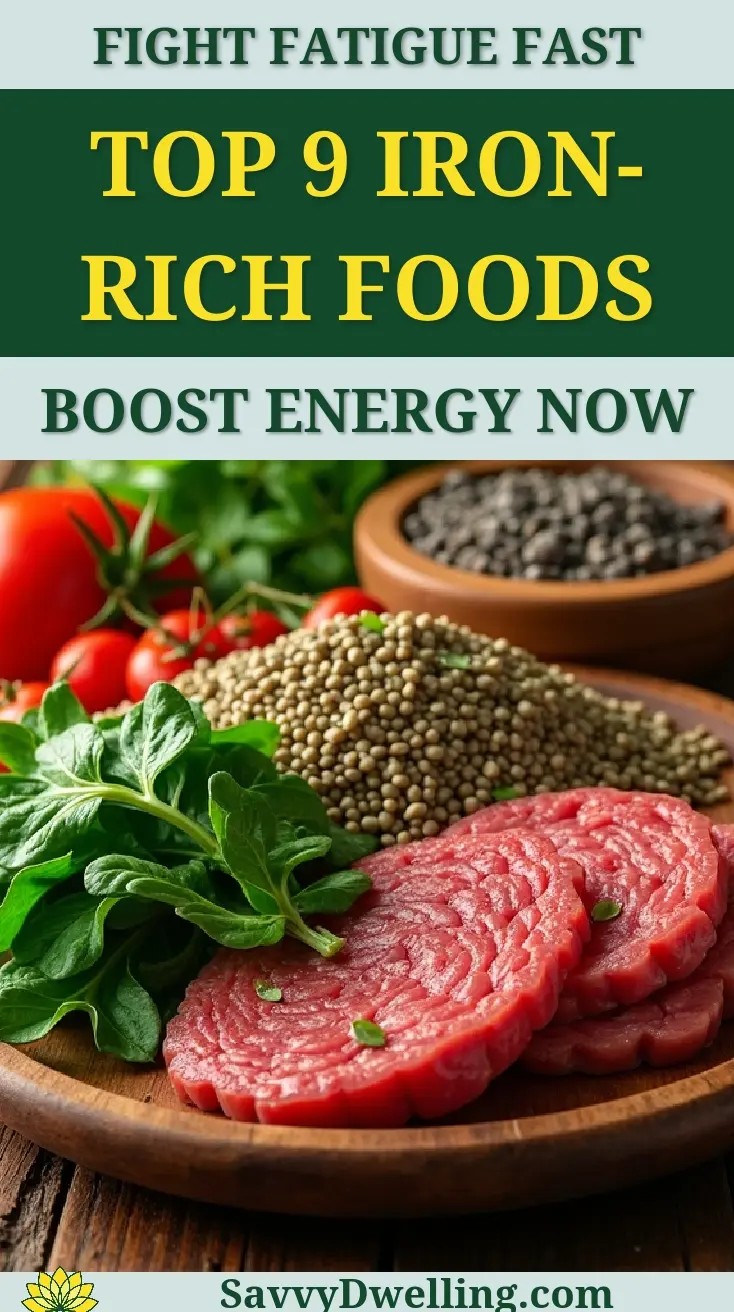7 Zinc-rich Foods to Supercharge Your Immune System
Feeling run down more often than you’d like, or noticing that every cold seems to linger longer than it should? Your immune system might be crying out for zinc, a mineral that’s absolutely crucial for keeping your body’s defenses strong. You’re not alone in this struggle—many people unknowingly fall short of their daily zinc needs, leaving them more vulnerable to infections and slower to recover.
This guide will show you exactly which seven zinc-packed foods can transform your immune health, plus the simple ways to work them into meals you already love. We’ve researched the science, tested the practical applications, and found the most effective food sources that actually make a difference. By the end of this article, you’ll have a clear roadmap to naturally boost your zinc intake and give your immune system the support it deserves.
Contents
- At a Glance: The Best Zinc-rich Foods
- The Science Made Simple: How Zinc Supports Your Immune System
- 1. Oysters: Nature’s Ultimate Zinc Powerhouse
- 2. Pumpkin Seeds: The Plant-based Zinc Champion
- 3. Lean Beef: Protein-packed Immune Support
- 4. Chickpeas: The Versatile Legume for Everyday Meals
- 5. Cashews: Convenient Zinc in Every Handful
- 6. Greek Yogurt: Probiotic-rich Zinc Source
- 7. Dark Chocolate: The Delicious Immune Booster
- Common Mistakes That Block Zinc Absorption
- Frequently Asked Questions
- Final Words
- Sources:
At a Glance: The Best Zinc-rich Foods
When you’re looking to boost your immune system through dietary zinc, knowing which foods with the most zinc can save you time and guesswork. This comprehensive zinc foods list shows exactly what each option offers beyond just mineral content.
The following table breaks down the top foods high in zinc with their precise zinc content per serving, plus additional immune-supporting nutrients that make each choice even more valuable for your health.
| Food | Zinc Content (per serving) | Additional Immune Benefits | Best For |
|---|---|---|---|
| Oysters | 74mg per 3 oz | High in vitamin B12 and selenium | Maximum zinc intake |
| Pumpkin Seeds | 2.2mg per 1 oz | Rich in magnesium and healthy fats | Plant-based diets |
| Beef (Lean) | 7mg per 3 oz | High in protein and iron | Complete protein source |
| Chickpeas | 2.5mg per cup | High in fiber and folate | Budget-friendly option |
| Cashews | 1.6mg per 1 oz | Contains heart-healthy monounsaturated fats | Convenient snacking |
| Greek Yogurt | 1.3mg per cup | Probiotics for gut health | Breakfast and snacks |
| Dark Chocolate | 3.3mg per 3 oz | Antioxidants and mood support | Healthy treats |
Notice how oysters dominate this zinc rich food list with an impressive 74mg per serving. That single portion provides nearly seven times your daily zinc needs, making it the ultimate choice when you want maximum dietary zinc impact.
For those following plant-based eating patterns, pumpkin seeds lead the zinc-rich foods for the immune system among non-animal options. Meanwhile, everyday staples like chickpeas and Greek yogurt offer steady zinc support that fits seamlessly into regular meal planning.
The Science Made Simple: How Zinc Supports Your Immune System
What Zinc Does in Your Body
Think of zinc as your immune system’s personal trainer. This mineral activates over 300 enzymes in your body, many of which directly support your immune response. Zinc helps create and activate T-cells, the specialized white blood cells that hunt down viruses and bacteria.
Your body also uses zinc to build and repair the barriers that keep germs out. Zinc strengthens your skin, mucous membranes, and the lining of your digestive tract-your first lines of defense against illness. Without enough zinc, these protective barriers become weak and leaky.
Beyond immune function, zinc supports wound healing and helps your body produce new cells. When you’re fighting an infection, your zinc needs increase because your immune system is working overtime to protect you.
How Much Zinc Your Body Needs Daily
Your daily zinc requirements depend on your age and gender. Adult men need about 11 milligrams of zinc daily, while adult women need 8 milligrams. Pregnant women require slightly more at 11 milligrams, and breastfeeding mothers need 12 milligrams.
Children’s needs vary by age, ranging from 3 milligrams for toddlers to 11 milligrams for teenagers. Your body can’t store zinc long-term, so you need to replenish it regularly through zinc-rich foods or supplements.
Most people can meet their zinc needs through a balanced diet that includes a variety of zinc foods. However, certain groups-including vegetarians, older adults, and people with digestive disorders-may struggle to absorb enough dietary zinc.
Signs Your Body May Need More Zinc
Zinc deficiency often develops gradually, making it tricky to spot early. Frequent colds, slow-healing cuts, and unexplained fatigue can all signal that your body needs more zinc. You might also notice changes in your appetite or sense of taste and smell. These symptoms can also hint at other surprising signs of zinc deficiency that may not be as obvious at first.
Your skin and hair offer additional clues. Dry, rough patches of skin, brittle nails, or hair loss could indicate low zinc levels. Some people also experience mood changes or difficulty concentrating when their zinc intake is insufficient. These symptoms can sometimes mirror those of iron deficiency, which may lead to anemia. Recognizing the signs of anemia is crucial, as early detection can help prevent more serious health issues.
If you suspect you’re not getting enough zinc, focus on adding more foods high in zinc to your meals rather than immediately turning to supplements. Many zinc-rich foods provide additional immune-supporting nutrients that work synergistically with zinc.
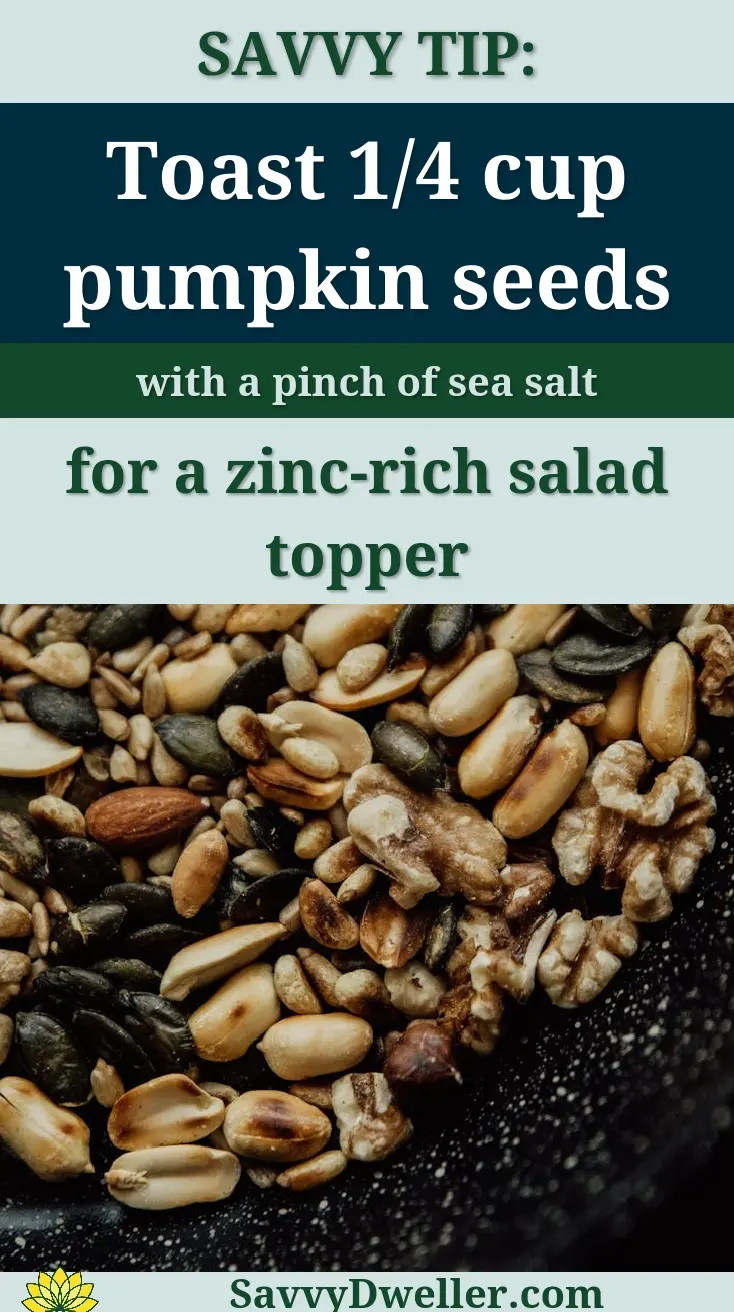
1. Oysters: Nature’s Ultimate Zinc Powerhouse
Why Oysters Lead the Pack
No other food comes close to oysters when it comes to zinc content. Just three ounces of oysters deliver a whopping 74 milligrams of zinc-more than six times your daily requirement. This makes oysters the undisputed champion among zinc-enriched foods.
The zinc in oysters is also highly bioavailable, meaning your body can easily absorb and use it. Unlike plant-based zinc sources, oysters don’t contain compounds that interfere with zinc absorption. You’ll also get a bonus dose of vitamin B12, selenium, and omega-3 fatty acids.
Fresh oysters from clean waters are safest and most nutritious. Look for oysters that smell like the ocean-never fishy or ammonia-like-and have tightly closed shells or shells that snap shut when tapped.
Simple Ways to Enjoy Oysters at Home
Raw oysters on the half shell might seem intimidating, but they’re surprisingly simple to prepare at home. Start by scrubbing the shells under cold running water with a stiff brush to remove any dirt or debris.
To shuck oysters safely:
- Hold the oyster firmly with a kitchen towel, flat side up
- Insert an oyster knife at the hinge, twisting gently until you hear a pop
- Slide the knife along the top shell to cut the muscle
- Remove any shell fragments and serve immediately
If raw oysters aren’t appealing, try grilling them until the shells pop open, then top with garlic butter and herbs. Steamed oysters are another beginner-friendly option that preserves most of the zinc content.
Budget-friendly Alternatives to Fresh Oysters
Fresh oysters can be expensive, but canned oysters offer similar zinc benefits at a fraction of the cost. A 3-ounce serving of canned oysters contains about 77 milligrams of zinc, making them one of the most affordable foods with the most zinc.
Look for oysters canned in water rather than oil to avoid excess calories. You can add canned oysters to pasta dishes, soups, or stir-fries for an instant zinc boost. They work particularly well in creamy chowders or mixed into stuffing.
Frozen oysters are another budget-conscious choice. While they lose some texture when thawed, frozen oysters retain their zinc content and work well in cooked dishes like oyster stew or seafood pasta.
Also See: 7 Foods That Can Help You Sleep Better at Night
2. Pumpkin Seeds: The Plant-based Zinc Champion
How to Select and Store Pumpkin Seeds
Fresh pumpkin seeds from whole pumpkins provide the highest zinc content and best flavor. When carving jack-o’-lanterns or preparing fresh pumpkin, save those seeds-they contain about 2.2 milligrams of zinc per ounce. Choose pumpkins that feel heavy for their size with unblemished skin.
Store-bought pumpkin seeds, also called pepitas, are convenient year-round options. Look for raw, unsalted varieties that haven’t been processed with excessive heat, which can reduce their nutritional value. Green pepitas are hulled seeds, while white ones still have their shells.
Proper storage keeps your pumpkin seeds fresh and nutritious. Store raw seeds in an airtight container in the refrigerator for up to one month, or freeze them for up to three months. Roasted seeds stay fresh at room temperature for about one week.
Creative Ways to Add Pumpkin Seeds to Your Meals
Pumpkin seeds add satisfying crunch and zinc to countless dishes. Sprinkle them over salads, yogurt, or oatmeal for an easy way to boost your intake of zinc-rich foods. They also work beautifully mixed into granola or trail mix.
Try these simple additions throughout your day:
- Blend raw pumpkin seeds into smoothies for extra protein and zinc
- Mix them into homemade bread or muffin batter
- Toss them with roasted vegetables during the last 10 minutes of cooking
- Stir them into soups or chili for added texture
Ground pumpkin seeds make an excellent coating for chicken or fish, providing both flavor and zinc in food preparation. You can also use ground seeds as a partial flour substitute in gluten-free baking.
Roasting Pumpkin Seeds for Maximum Flavor
Roasting transforms bland pumpkin seeds into crispy, flavorful snacks while preserving their zinc content. Start by cleaning fresh seeds thoroughly, removing all pumpkin pulp and rinsing them in a colander under cool water.
For perfectly roasted seeds:
- Soak cleaned seeds in salt water for 10 minutes to enhance flavor
- Pat seeds completely dry with paper towels
- Toss with a small amount of oil and your favorite seasonings
- Spread in a single layer on a baking sheet
- Roast at 300°F for 20-30 minutes, stirring every 10 minutes
Lower temperatures and longer cooking times produce crispier seeds without burning, ensuring you get the full zinc benefits along with great taste. Try seasonings like curry powder, smoked paprika, or cinnamon for variety. Adding fresh herbs or citrus can elevate the flavor of your creations further, much like how the best stovetop simmer pot recipes bring out delicious scents and tastes. Explore these recipes for a delightful culinary experience that enhances your home atmosphere.
3. Lean Beef: Protein-packed Immune Support
Choosing the Best Cuts for Zinc Content
Choose lean, meaty cuts because zinc concentrates in the protein, not the fat. Per ounce, cuts with less marbling usually provide more zinc by weight than fattier steaks.
- Top picks: top sirloin, eye of round, top round, bottom round, flank, and 90–95% lean ground beef.
- Good when slow-cooked: chuck roast and brisket flat (use the cooking liquid to keep minerals in the meal).
- Lower zinc per ounce: ribeye and short ribs due to higher fat.
- Grass-fed vs. grain-fed: flavor differs, but zinc in food is similar either way.
Aim for about 3–4 oz cooked lean beef to land close to the 7 mg per serving listed in many zinc foods lists. That keeps beef in your rotation of top foods high in zinc without overdoing saturated fat.
Cooking Methods That Preserve Zinc
Zinc is a stable mineral, but it can leach into water you pour off. Keep the juices in your meal or choose dry-heat methods to retain more of this nutrient.
- Pan-sear or grill: Cook over medium-high heat, then rest the meat 5 minutes so juices redistribute instead of spilling onto the plate.
- Roast: Use a sheet pan with a rack; collect drippings and whisk them into a quick pan sauce to save zinc-rich juices.
- Stir-fry: Cut beef thinly, cook fast over high heat, and add veggies at the end to keep moisture-and minerals-locked in.
- Slow-cook or pressure-cook: If you stew beef, serve the broth as part of the dish so none of the zinc goes down the drain.
Skip boiling and long simmering in excess water unless you plan to drink the broth. That simple move helps your zinc-rich foods work harder for you.
Portion Control for Optimal Benefits
A practical serving is 3–4 oz cooked beef (about a deck of cards). That portion provides meaningful dietary zinc along with complete protein and iron.
- Frequency: 2–3 times per week fits well alongside plant-based zinc foods like beans, seeds, and nuts.
- Balance the plate: Pair lean beef with high-fiber sides (roasted veggies, quinoa) to support overall wellness.
- Absorption tip: Animal protein aids zinc uptake, so beef is a reliable anchor in any zinc food list.
Rotate beef with other foods with the most zinc-like oysters, pumpkin seeds, and cashews-to cover your bases. This keeps your zinc foods for immune system support varied and satisfying, helping to fight inflammation naturally.
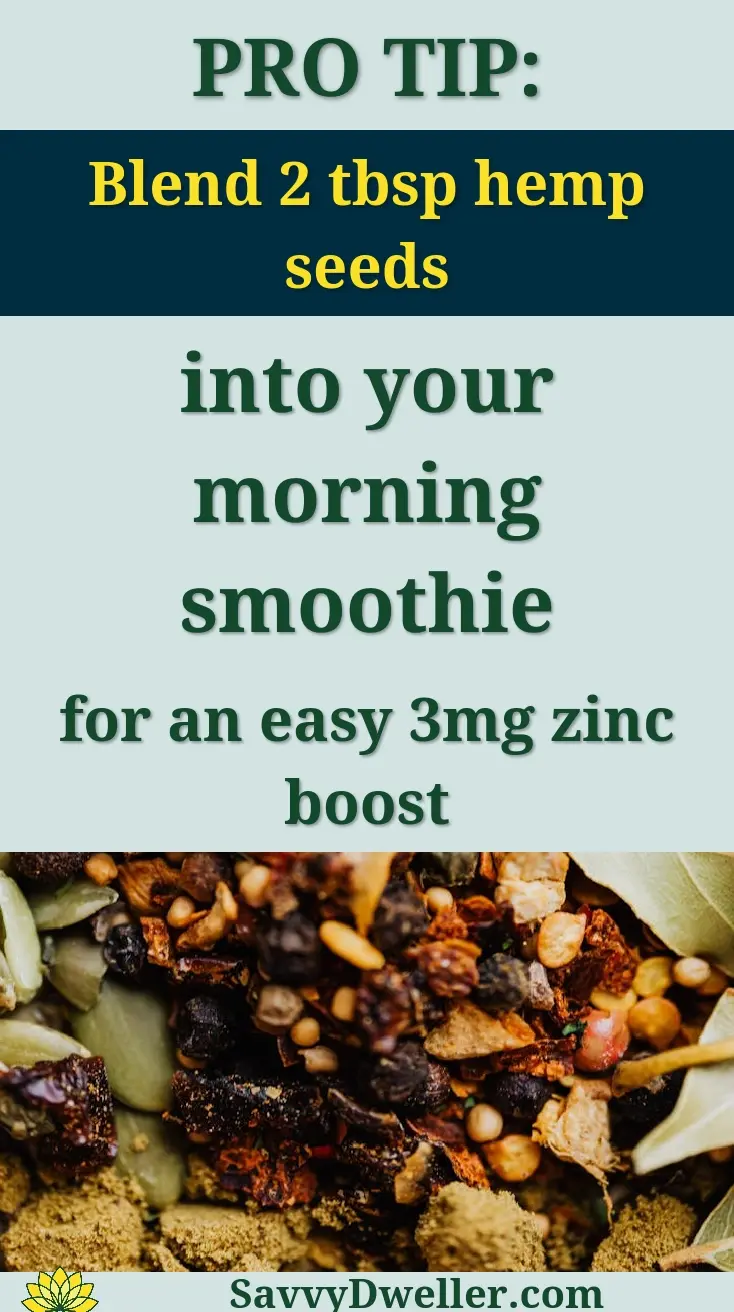
4. Chickpeas: The Versatile Legume for Everyday Meals
Fresh Vs. Canned: Which Offers More Zinc
Canned and home-cooked chickpeas deliver similar zinc per cup, but prep methods change how much your body can use. The big swing is bioavailability, not just the number on a label.
- Canned: Drain and rinse to cut sodium by up to 40% while keeping most minerals.
- Dried and cooked: Soaking and pressure cooking reduce phytates, which can block zinc absorption.
- Soak 8–12 hours with 1/2 teaspoon baking soda per cup of dry chickpeas.
- Rinse well and cook in fresh water (pressure cooker: ~35 minutes; simmer: 60–90 minutes).
- Use or freeze portions with their cooking liquid to retain zinc that leaches into broth.
Sprouting chickpeas 24–36 hours before cooking can further lower phytates. This is a smart upgrade when building a list of zinc-rich food options you’ll actually eat.
Quick Chickpea Meal Ideas
Chickpeas are a fast, budget-friendly way to add foods high in zinc to busy weeknights. Keep a couple of cans on standby for 10-minute meals.
- Skillet lemon-garlic chickpeas: Sauté olive oil, garlic, and chili; add chickpeas, lemon zest, and spinach; finish with lemon juice.
- Sheet-pan tacos: Roast chickpeas with taco seasoning at 425°F for 15 minutes; serve in warm tortillas with cabbage slaw.
- 5-minute hummus toast: Spread hummus on whole-grain toast; top with sliced cucumbers, cherry tomatoes, and za’atar.
- Pantry curry: Simmer chickpeas with canned tomatoes, curry paste, and coconut milk; add peas at the end.
- Mason-jar salad: Layer vinaigrette, chickpeas, bell peppers, cucumbers, quinoa, and herbs; shake when ready.
These simple builds turn zinc-rich foods for the immune system into everyday staples. They’re quick, flavorful, and easy to batch-prep. Incorporating foods known for their heavy metal detox properties can enhance your overall health. Options like cilantro and spirulina not only detoxify but also boost immune function.
Pairing Chickpeas With Vitamin C Foods
Vitamin C doesn’t boost zinc absorption like it does iron, but it supports overall immune function and rounds out your plate. The bigger win for zinc is reducing phytates or adding protein. Vitamin C is also beneficial for your skin, especially when used in serums.
- Smart pairings: Chickpea salad with lemon, parsley, and red bell pepper; tomato-coconut chickpea curry; hummus with roasted broccoli.
- Absorption boosts: Serve chickpeas with animal protein (yogurt, cheese, or lean meat) or with sourdough/fermented foods to counter phytates.
- Prep tweak: Soak or sprout chickpeas, or use pressure cooking, to improve the zinc you actually absorb.
Build meals that mix chickpeas with colorful produce and a protein partner for a powerful, practical zinc rich food list. That’s how zinc foods for immune system support fit into real life.
5. Cashews: Convenient Zinc in Every Handful
Raw Vs. Roasted: Zinc Content Differences
Zinc is heat-stable, so raw and roasted cashews have similar zinc per ounce. The main changes with roasting are flavor, crunch, and moisture loss-not minerals.
- Choose dry-roasted, unsalted cashews to manage sodium.
- Store-bought “raw” cashews are steamed (safe to eat); truly raw cashews aren’t sold due to urushiol.
- Oil-roasted vs. dry-roasted: Zinc in food stays similar; check labels for added oils or sugars.
Per 1 oz (about 18 nuts), cashews offer roughly 1.6 mg of zinc-an easy add to any zinc foods list. They’re portable, tasty, and flexible in both sweet and savory dishes.
Smart Portion Sizes for Daily Snacking
Stick to 1 oz (a small handful) to get zinc benefits without calorie creep. That serving fits neatly into most snack routines.
- Visual cue: 18 cashews or 1/4 cup.
- Pairings that satisfy: An apple, a clementine, or carrot sticks for crunch and color.
- Meal add-ins: Sprinkle over oatmeal, yogurt, or stir-fries to layer in foods with zinc.
Pre-portion into small containers so your zinc-rich foods don’t turn into a bottomless bowl. Consistent, modest servings work better than “catch-up” snacks.
Cashew-based Recipes for Immune Support
Cashews blend into sauces and soups that make zinc-enriched foods feel luxurious. Soaked cashews turn silky in minutes.
- Creamy cashew–tomato soup: Soak 1/2 cup cashews in hot water 20 minutes; blend with a can of tomatoes, garlic, and broth; simmer 10 minutes; finish with basil.
- Cashew-lime dressing: Blend 1/3 cup soaked cashews, lime juice, honey, garlic, cumin, and water; toss with cabbage, red pepper, and cilantro.
- 15-minute cashew stir-fry: Toast cashews; stir-fry snap peas, bell pepper, and scallions; add tamari, ginger, and a splash of orange juice; finish with cashews.
- Cashew “parmesan”: Pulse cashews with nutritional yeast and a pinch of salt; sprinkle over roasted veggies or pasta.
These ideas weave cashews into top zinc foods while adding fiber- and vitamin-rich produce. It’s a tasty way to build out your list of zinc rich foods and keep variety high.
6. Greek Yogurt: Probiotic-rich Zinc Source
Why Greek Yogurt Beats Regular Yogurt
Strained Greek yogurt concentrates protein and minerals, giving you slightly more zinc per cup than most regular yogurts plus a steadier, longer-lasting feel of fullness. That higher protein content also pairs well with dietary zinc, supporting absorption and meal satisfaction.
Look for plain, unsweetened Greek yogurt with live and active cultures. Skyr (Icelandic-style) fits the same “strained” profile and works like Greek yogurt in your zinc foods list.
Enhancing Absorption With Zinc-friendly Toppings
Phytates in raw grains, nuts, and seeds can bind zinc, so keep crunchy add-ins smart and simple. Favor low-phytate, antioxidant-rich toppings like berries and citrus, and use sprouted or roasted seeds when you want extra crunch from foods with zinc.
- Go-to toppings: fresh berries, kiwi, orange zest, cinnamon, a drizzle of honey, toasted coconut flakes.
- Crunch carefully: choose sprouted or roasted pumpkin seeds or cashews in small portions (1–2 tablespoons).
- Flavor boosts: a few dark chocolate shavings (70–85% cacao) add polyphenols and a touch of zinc without overdoing inhibitors.
How to build a zinc-smart yogurt bowl (2 minutes):
- Spoon 1 cup plain Greek yogurt into a bowl.
- Top with 1/2 cup berries and a sprinkle of orange or lemon zest.
- Add 1 tablespoon roasted or sprouted pumpkin seeds for extra zinc in food without too many phytates.
- Finish with a pinch of cinnamon and 1–2 teaspoons honey.
Reduce phytates in crunchy toppings:
- Soak raw nuts/seeds in salted water (1/2 teaspoon salt per cup water) for 6–8 hours.
- Drain, rinse, and pat dry.
- Roast at 300°F (150°C) for 15–25 minutes until crisp; cool and store airtight.
Plant-based Yogurt Alternatives
Soy or pea-protein yogurts tend to offer more dietary zinc than almond or coconut bases, especially when fortified. Check labels for added zinc (look for “zinc gluconate” or “zinc sulfate”) and live cultures.
- Label checklist: at least 6–10 g protein, 8–15% Daily Value for zinc, minimal added sugar, live cultures.
- Toppings that support zinc foods for immune system goals: berries, citrus, hemp hearts, and a spoon of sprouted pumpkin seeds.
Quick dairy-free combo: 3/4 cup fortified soy yogurt + 1/2 cup strawberries + 1 tablespoon hemp hearts + cocoa nibs (1 teaspoon). This balances probiotics with zinc-rich foods while keeping phytates manageable. Incorporating gut-friendly ingredients is crucial for overall health. In fact, exploring the top 10 probiotic foods can significantly enhance gut health and well-being.
7. Dark Chocolate: The Delicious Immune Booster
Choosing Chocolate With Optimal Zinc Content
Darker bars (70–85% cacao) generally provide more zinc per bite than milk chocolate and keep sugar lower. Look for short ingredient lists: cocoa mass, cocoa butter, a little sugar, and vanilla.
If heavy metals are a concern, rotate brands and check for companies that publish third-party testing or meet strict Prop 65 standards. For flavanol retention, choose bars not labeled “processed with alkali.”
Healthy Serving Sizes for Daily Enjoyment
A practical portion is 10–30 g (about 1–3 small squares), which fits easily into most eating patterns. This keeps calories and added sugar in check while still adding a meaningful bump of zinc in food.
How to make a smarter chocolate break:
- Portion 1–2 squares (not the whole bar) onto a small plate.
- Pair with protein (Greek yogurt or a handful of roasted chickpeas) to steady energy.
- Savor slowly with water or herbal tea instead of coffee to avoid blocking zinc uptake.
Pairing Dark Chocolate With Other Zinc-rich Foods
Combine dark chocolate with items from your zinc rich food list to create balanced, immune-supportive snacks. These ideas keep phytates lower and flavor high.
- Greek Yogurt Bark: Mix 1 cup Greek yogurt with 1–2 teaspoons honey, spread thin, top with 1 tablespoon chopped dark chocolate and 1 tablespoon roasted pumpkin seeds; freeze 1–2 hours and break into pieces.
- Trail Mix Upgrade: Combine roasted chickpeas, roasted cashews, and dark chocolate chunks in a 2:2:1 ratio for a satisfying blend of top zinc foods.
- Citrus-Cocoa Bowl: Greek yogurt + orange segments + grated dark chocolate + pinch of sea salt. Bright, low-phytate, and zinc-friendly.
Common Mistakes That Block Zinc Absorption
Foods That Interfere With Zinc Uptake
Phytate-heavy foods-raw bran, unsoaked legumes, and dense whole-grain cereals-can bind zinc and reduce absorption. You don’t need to avoid them, just prepare and time them wisely.
- Use sourdough or yeasted breads instead of raw bran-heavy crackers.
- Soak, sprout, or pressure-cook beans and lentils to lower phytates.
- Keep very high-fiber cereals away from meals built around foods high in zinc.
- Limit alcohol when you rely on zinc-rich foods for the immune system; alcohol can hinder absorption and deplete stores.
Timing Your Zinc-rich Meals Properly
Spread zinc food sources across the day and avoid stacking big phytate hits with your highest-zinc meals. Simple spacing boosts what you absorb from the top foods high in zinc.
- Pick one “zinc-forward” meal (e.g., Greek yogurt bowl or a legume-and-seed dish prepared with soaking/sprouting).
- Keep coffee or black tea at least 1 hour away from that meal.
- If you use mineral supplements, separate them (see below) so they don’t compete with zinc.
- Prioritize protein with zinc foods-animal or dairy proteins can aid zinc uptake.
Supplement Interactions to Avoid
High-dose minerals can compete with zinc, and some medications bind with zinc supplements. This is general information; check with a qualified professional for personal guidance.
Iron and Calcium Timing Issues
Take iron or calcium supplements 2–3 hours apart from zinc-rich meals or zinc supplements to reduce competition. Large doses taken together can blunt absorption for all three.
- If you use a multivitamin with iron, consider zinc-rich meals at a different time of day.
- Choose food-first strategies from your list of zinc-rich food to reduce reliance on high-dose single minerals.
Coffee and Tea Consumption Guidelines
Polyphenols and tannins in coffee and tea can temporarily reduce zinc absorption. Keep them one hour before or after meals centered on zinc-enriched foods.
- Swap in water, rooibos, or ginger tea with zinc meals; they’re lower in tannins.
- If you prefer tea with meals, add milk separately from zinc meals since calcium can also compete.
With a few timing tweaks and smarter prep, your 7 zinc-rich foods work harder for your immune system without changing what you love to eat. This keeps your zinc food list both practical and powerful.
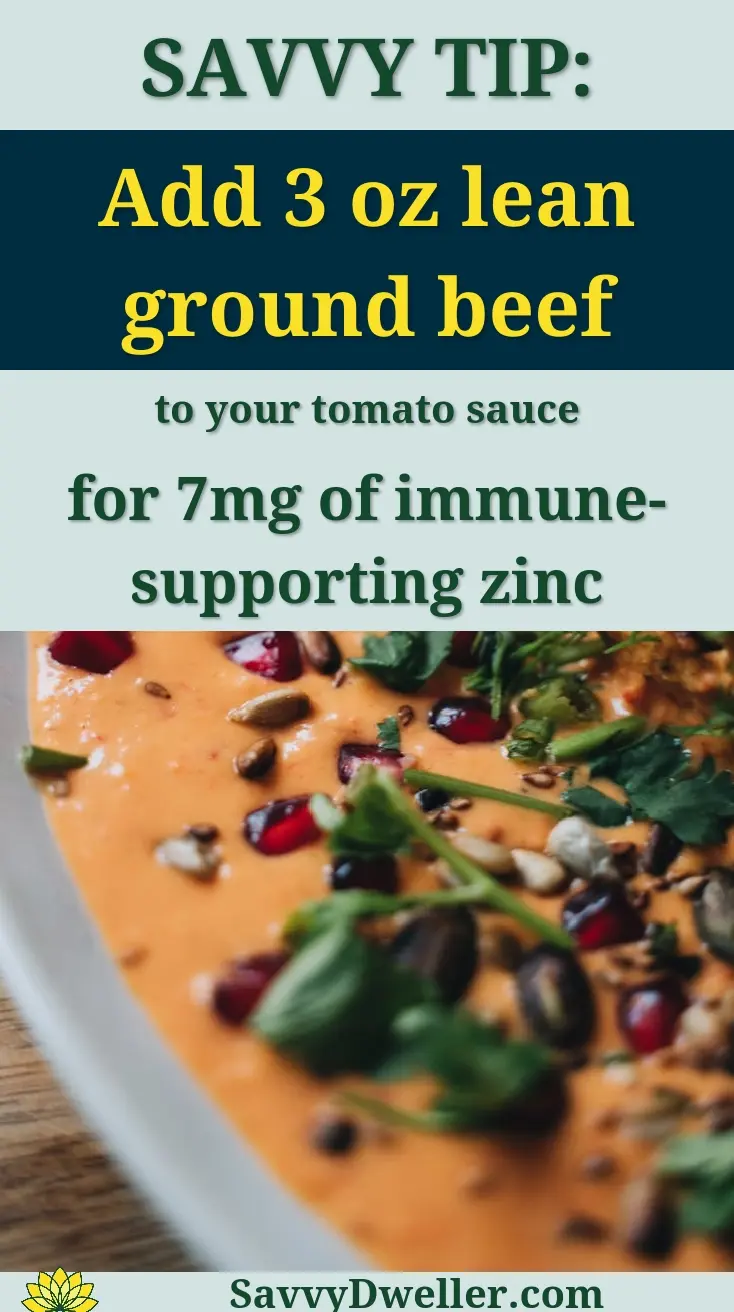
Frequently Asked Questions
I’m a Vegetarian. How Can I Ensure I Get Enough Zinc?
For vegetarians and vegans, focusing on plant-based sources like pumpkin seeds, chickpeas, and cashews is key. Since compounds called phytates in plants can hinder zinc absorption, it’s important to soak, sprout, or ferment these foods when possible. For example, soaking dried chickpeas before cooking can improve zinc bioavailability. Aiming for a slightly higher daily intake than the RDA can also help compensate for lower absorption rates.
Does Cooking Affect the Zinc Content in These Foods?
Zinc is a relatively stable mineral and is not easily destroyed by heat like some vitamins. The primary concern during cooking is the loss of zinc through leaching into water. To maximize retention, opt for cooking methods like steaming, roasting, or sautéing instead of boiling. If you do boil foods like chickpeas, consider using the cooking liquid (e.g., in soups or stews) to recapture any lost nutrients.
Can I Combine These Foods to Boost Zinc Absorption?
Absolutely. A powerful strategy is to pair zinc-rich foods with sources of animal protein or citric acid. The protein from animal sources can enhance the absorption of zinc from plant foods in the same meal. Similarly, the citric acid found in lemon juice, tomatoes, or bell peppers can help make zinc more available to your body. Try a chickpea salad with a lemon-tahini dressing for a synergistic effect.
Final Words
Building a stronger immune system doesn’t require expensive supplements or complicated meal plans. These seven zinc-rich foods offer a natural, delicious way to support your body’s defense mechanisms while enjoying varied, satisfying meals. From oysters packed with 74mg of zinc to the convenient handful of cashews, you now have practical options that fit any lifestyle or budget.
The key lies in consistency and variety-rotate these foods throughout your week to maintain steady zinc levels while avoiding absorption pitfalls. Remember to time your zinc-rich meals away from coffee and high-calcium foods, and pair them with vitamin C sources when possible for maximum benefit.
Ready to strengthen your immune system naturally? Start incorporating just two or three of these foods into your weekly routine and notice the difference. For more evidence-based wellness tips and practical home solutions, check out Savvy Dwelling where we continue sharing research-backed strategies for healthier living.

